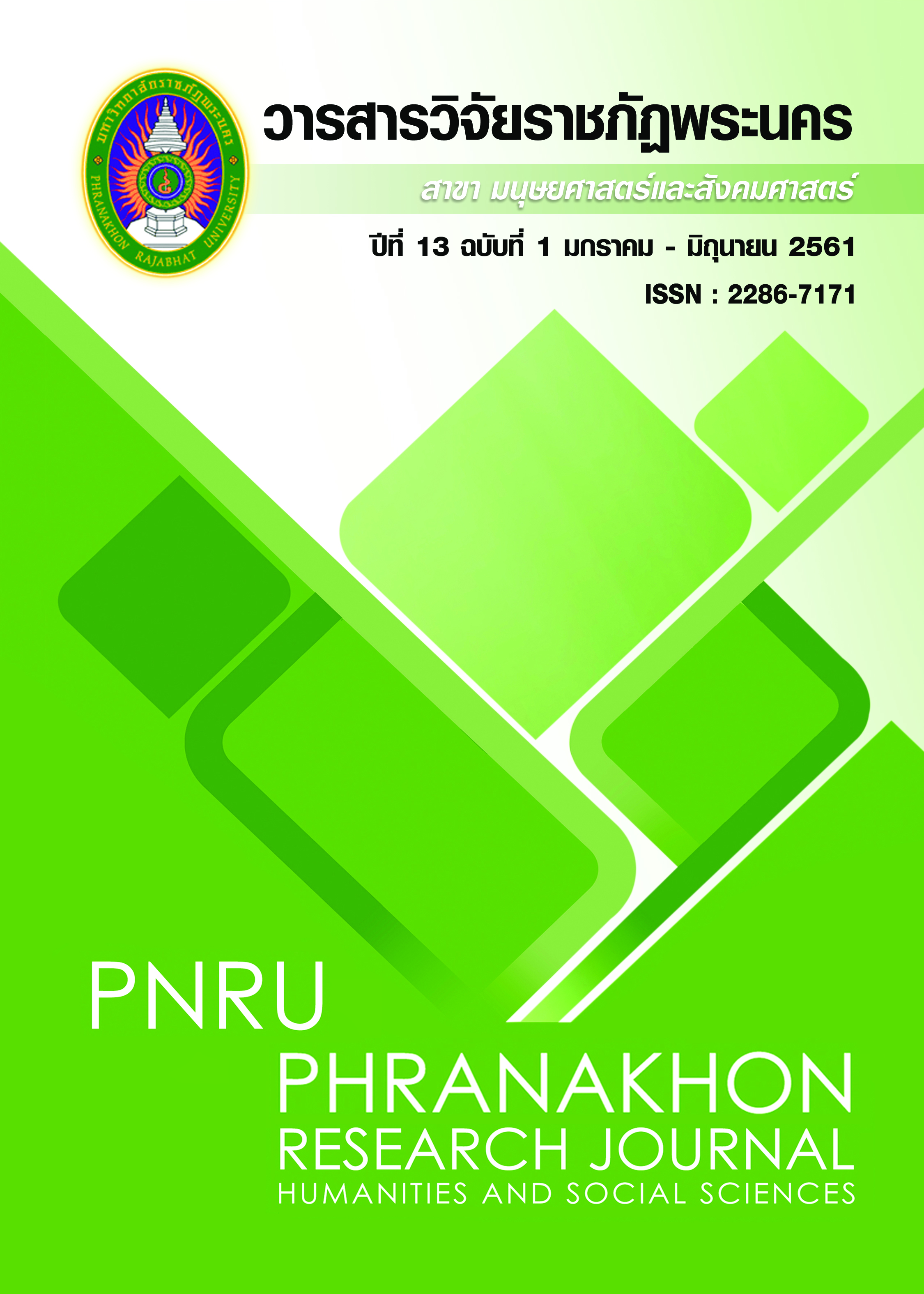รูปแบบพิพิธภัณฑ์ท้องถิ่น: การจัดการมรดกวัฒนธรรม ภูมิปัญญาท้องถิ่นให้เป็นแหล่งเรียนรู้และสนับสนุนการท่องเที่ยว ในพื้นที่บางกะเจ้า จังหวัดสมุทรปราการ
Main Article Content
Abstract
This research was aimed to study, gather, and manage cultural heritage as well as create a database for cultural heritage and traditional knowledge to promote and publicize local museums and management of cultural tourism with sustainable community participation. It was also intended to study patterns of displaying exhibition in local museums as a source of community learning and support of cultural tourism at the Museums of Wat Bang Krasob and Wat Bang KoBua. The tools used to research involved questionnaire, group discussion topics, interviews, antiquities recording form, and project or activity assessment form. The analysis was done using content analysis approach divided by information derived from the discussions, interviews and applied statistical analysis of satisfaction. The research found (1) Intellectual heritage of Bangkrasob’s temple are Luang Pu Choie’s votive tablets, porcelains and paintings in ancient Thai scrolls in Khmer letter, early Ratanakosin period. The wisdom in making coconut-palm sugar, carve of a banana stalk and perforated paper. At Bangkorbou’s temple are the medication of Luang Pu’s Meuan, antiques, ceramics, Thai wooden parsonage and the old chapel in Early Rattanakosin Period. (2) The exhibit format in the museum has divided the areas in to the history section of faith. The continuation and development of measurement community wisdom, culture, lifestyle community and space for learning activities. Participation of the local communities in consideration, cooperation, and benefits taking encourages a sense of mutual ownership and community pride of own cultural heritage. A field trip to locations with similar context helps strengthen confidence in the community work, confidence in their potential and ability to manage according to the community context. The museum sustainability can be derived by allowing local people and agencies to take parts in management which will build the sense of passion and mutual ownership and the management yields mutual benefits to all sectors.
Article Details
Each publish articles were copyright by Phranakorn Rajabhat University
Any contents which appeared in each articles in the journal were authors personal opinion. It did not relate to Phranakorn Rajabhat University and other instructors in the university. Each authors would take responsibility on their articles. If there are any mistake, the authors will take responsibility themselves
References
โกมาตร จึงเสถียรทรัพย์, คณิสร เต็งรัง,ราตรี ปิ่นแก้ว, วรัญญา เพ็ชรคง. (2556). วิถีชุมชน เครื่องมือ 7 ชิ้นที่ทำให้งานชุมชนง่าย ได้ผล และสนุก . กรุงเทพฯ : สำนักพิมพ์สุขศาลา.
คีรีบูน จงวุฒิเวศย์. (2558). การศึกษากระบวนการเรียนรู้และการถ่ายทอดความรู้ของพิพิธภัณฑ์ท้องถิ่นในจังหวัดนครปฐม. มหาวิทยาลัยศิลปากร.
ศูนย์มานุษยวิทยาสิรินธร(องค์กรมหาชน). (2545). พิพิธภัณฑ์ไทยในศตวรรษใหม่. กรุงเทพฯ : บริษัทอมรินทร์พริ้นติ้งแอนด์พับลิชชิ่งจำกัด(มหาชน).
สายันต์ ไพรชาญจิตร์. (2550). การจัดการทรัพยากรทางโบราณคดีในงานพัฒนาชุมชน. กรุงเทพฯ : โครงการหนังสือโบราณคดีชุมชน. พิมพ์ครั้งที่ 3.
สำนักพิพิธภัณฑ์สถานแห่งชาติ. (2558). คู่มือการจัดตั้งและบริหารจัดการพิพิธภัณฑ์. พิมพ์ครั้งที่ 2 . กรุงเทพฯ: เฮงศักดิ์มั่นคง.
สืบวงศ์ กาฬวงศ์. (2559). การบริหารทรัพย์สินวัด. หนังสือพิมพ์บ้านเมือง เรื่องเด่นประเด็นร้อน. ฉบับวันที่ 25 เมษายน 2559.
สำนักเลขาธิการคณะรัฐมนตรี. (2559). พระราชบัญญัติ ส่งเสริมและรักษามรดกภูมิปัญญาทางวัฒนธรรม พ.ศ. 2559. เล่ม 133 ตอนที่ 19 ก ราชกิจจานุเบกษา 1 มีนาคม 2559. [ออนไลน์]. เข้าถึงได้จาก:http://www.ratchakitcha.soc.go.th/RKJ/announce/search_result.jsp?SID=E0D47B51C240BBB78CA5CB46E0C946A5 สืบค้น 16 พฤษภาคม 2559.
อลงกรณ์ จุฑาเกต. (2557). การมีส่วน ร่วมของชุมชนในการพัฒนาแหล่งการเรียนรู้ตลอดชีวิต : พิพิธภัณฑ์ท้องถิ่นกรุงเทพมหานคร. วารสารวิชาการ Veridian E-Journal ปีที่ 7 ฉบับที่ 3 เดือนกันยายน – ธันวาคม 2557 ฉบับมนุษยศาสตร์ สังคมศาสตร์ และศิลปะ หน้า 1113 – 1124.
Creighton, James L. (2005). The Public Participation Handbook: Making Better Decisions Through Citizen Involvement. John Wiley & Sons,Inc.


